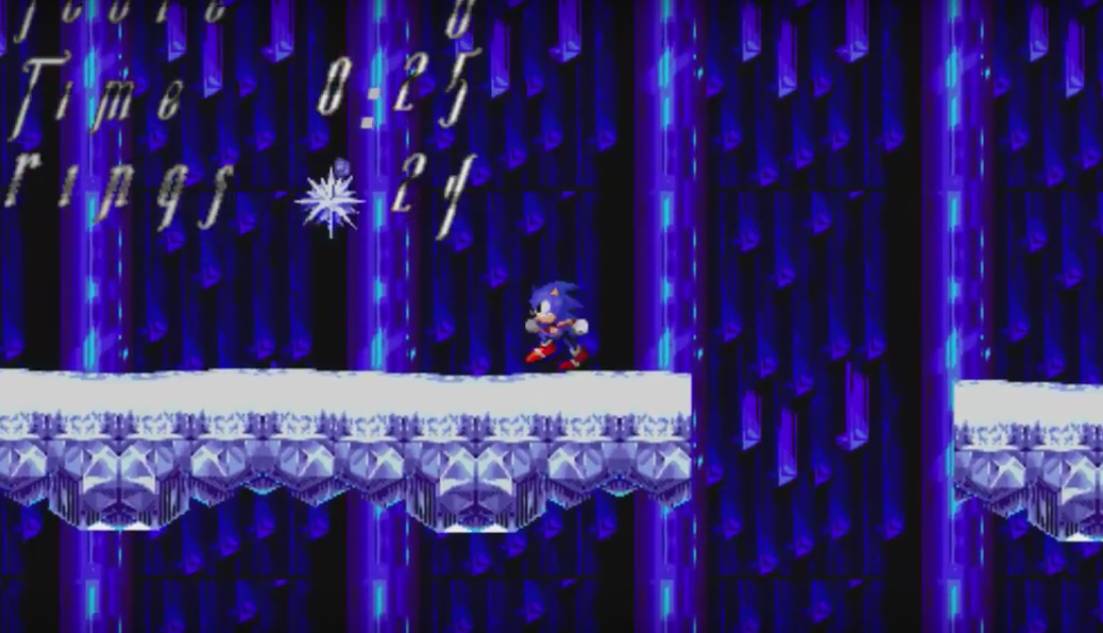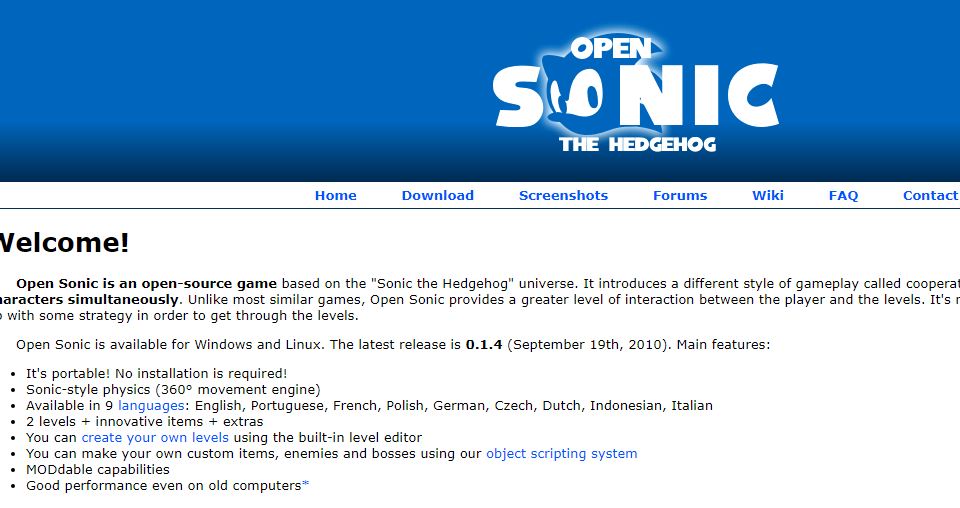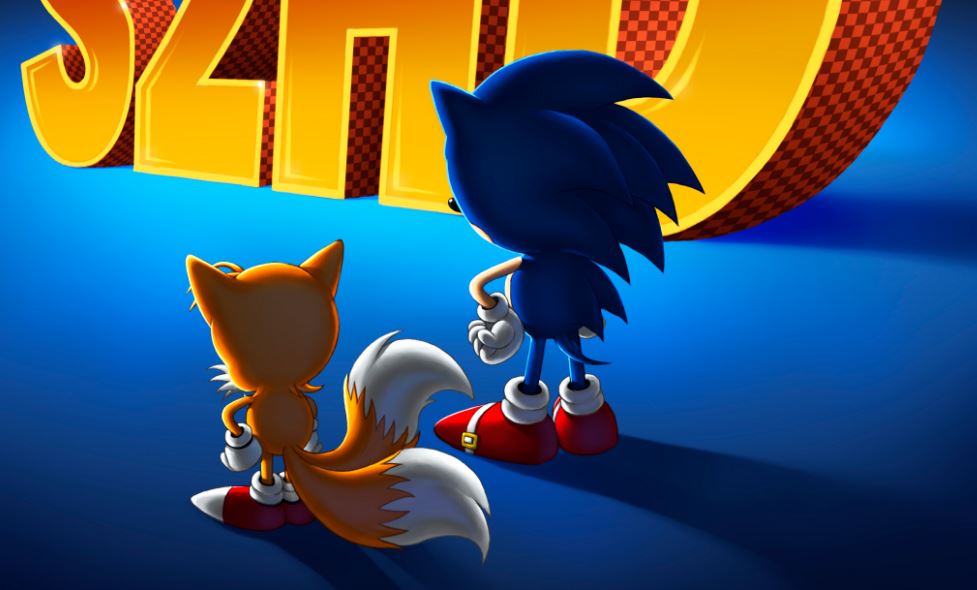Tens of thousands of YouTube videos, an endless number of websites, photos, fanzines, and even creepypastas. The list is as long as it is fascinating. Few fanbases can claim to be as fervent or dedicated as the one related to the blue blur.
Yet, perhaps more than anywhere else, the place where this passion can be seen the strongest is in fan-made games. Since the mid-1990s, there have been an almost endless amount of Sonic fan projects. You may have watched the recent Sonic 2 HD trailer that has racked up hundreds of thousands of views or played Sonic Mania, a title created by many former fangame creators.
Even more amazing is that these accomplishments can be traced back to the very early days of the internet when Martin Braid released, what is believed to be, the first Sonic fangame, Sonic Boom (1995). A simple, hand-drawn adventure where players move through a couple of levels, throwing apples at enemies.
https://www.youtube.com/watch?v=KgohNHcB6w0
Another game released in 1995 was Sonyc, a title that captured the essence of the popular hedgehog and featured a cracking soundtrack that has developed its own following on YouTube. Manuel Pazos, one of the creators, told me: “I borrowed both Sonic and a Master System from a friend. I liked it so much that I decided to create my own version for an MSX computer. At the time, I did not have much experience making games, so I thought it was an interesting project.”
Sonyc was a fleshed-out title that consisted of four unique zones, with each one containing three acts, as well as a bonus stages that could be played after completing a zone.
Manuel described some of the difficulties in making the game back in the mid-90s such as using floppy disks and working with assembly code.“Bear in mind that in those times, 1995-1997, the internet was not as popular, and there was no information or tools.”
However, Ryan Bloom, the creator of SAGE (Sonic Amateur Game Expo) and an experienced fangame contributor, explained to me how things were easier in the 1990s: “One of the benefits in those early days was how easy it was to make a videogame. Creating games isn’t easy by any stretch, but especially nowadays, there’s a lot of work involved in making a good fangame.
“Back then, the bar was considerably lower — you could throw together just about anything in a few days and that would be good enough. I don’t remember exactly how many games were available when I got there, but I know I was never short on new things to try out from my new friends.”
Yet, these were far from the only games released in the 1990s. Other fan projects included Tails and the Quest of 100 Rings, Sonic Robo Blast 1/2, and The Search for Knuckles. In fact, Sonic Robo Blast 2 is still being worked on to this day (the latest patch was released in May this year).
The Sonic Boom

While there was a sizeable amount of interesting fan games released in the 1990s, the rapid uptake in internet use in the early 2000s enabled potential creators and fans to more easily find one another, share resources and play these games. This resulted in a larger crop of games, including more adventurous titles that took Sonic in new directions such as the humour-infused When Tails Gets Bored and hoax games such as Knuckles in China Land.
Kadir Aytaç Aksu was one of the people developing games during this period, creating titles including Sonic Chaos, Sonic Chaos Strikes Again and Ultimate Sonic Chaos Revolution over a couple of years.
Each one featured retro, 2D Sonic-style artwork and the signature blazing speed that would be familiar to most Sonic gamers, but these games also featured original artwork and levels.
The essence of Sonic had been captured and, while the first few had some flaws, they were a lot of fun to play. Aytaç described to me how there is a learning curve to creating these games: “The hardest part for me was creating something both challenging and fun. When I look back at my old games, especially the first ones, I find them hard to play.
“You are not creating something [completely] new and your games appeal to mostly Sonic fans so you have to find a balance between classic gameplay mechanics and introducing new enjoyable ones. Since fangames are not financially driven, you are mostly alone or just with a few other people that have the spare time to accomplish something.”
Aytaç explained how he watched the community evolve during the time he created fangames: “I saw it expand greatly over the years, lots of new games, tutorials, sprites, and sound effects.
“I was getting constant offers for help while I was making games, be it for idea sharing, testing, creating levels or drawing sprites. I haven’t been involved in the Sonic fangames community for many years but it was going strong with events like Sonic Amateur Games Expo.”
What immediately struck me while writing this article was the love and attention that had been spent on crafting these games. When I interviewed Aytaç, he thanked me for bringing back fond memories and he similarly wrote on his website in Aug 2004:
“Unfortunately, I can no longer work on this site or my game projects any more, as I am currently very busy in university and involved in various other activities.
Therefore, I wish to say goodbye to everyone who has visited this site and / or played any of my games in the past … Thanks to everyone for supporting Magicgrafx Entertainment since 1998.”
Gotta go faster!

Another large factor in the growing fangame community was the creation of SAGE (Sonic Amateur Game Expo), an annual event that showcases the latest Sonic fangames. This year, more than forty titles will be shown, including a handful of games not featuring the fuzzy blue hedgehog.
Ryan Bloom, SAGE’s creator, explained why he entered the community: “I loved all the games my friends and I were making, but trying to talk to anyone outside of our community about them always resulted in funny looks at best. Many wanted to stay away because they viewed them as an extension of piracy. They thought we were making illegal bootleg games, like that “”7 Grand Dad”” NES game or whatever.
“Technically, we kind of were, but I always hated that terminology. By that definition, fan art is “”illegal bootleg artwork”” and fanfiction is an “”illegal bootleg book.”” It’s all about your point of view. So, I figured I would change that point of view.”
With each successive year, the games shown at SAGE have become more advanced. Two of this year’s crop include the beautiful pastel coloured animation of Sonic 2 HD (S2HD), and Sonic Ages, a game where each stage features a different art style.
Both highlight how far fangames have progressed over the last two decades. The sound effects, graphics, and gameplay are all top of the line – there were moments in which I was overcome by a sense of awe at the accomplishments of these developers.
However, they are far from the only games that I recommend fans check out. To name a couple: Sonic & Shantae Adventure v3 and Ultimate Sonic Fighters.
If you take a quick look on YouTube or Google “Sonic fangames”, you will be greeted by thousands of videos and websites dedicated to showcasing the latest fangames. The community has expanded to the point where there is a myriad of forums dedicated to creating, hacking and discussing these games. The allure of the speedy hedgehog and a welcoming community have broken down stigmatisms, paving the way for the fanbase to quickly grow into something where large teams of creators work together to create games.
Mateus Reis, who worked on Open Sonic, explained to me how the blue blur has a unique appeal: “Sonic has a good mix of features going on, both as a character and a game. He has attitude, and the speed and crazy physics were things never seen in a game before. Combined with the colourful and appealing graphics and memorable soundtracks, Sonic made his mark as a mascot, and as a showcase of the Genesis/Mega Drive’s power.
“Another factor that has worked in the Sonic fangame community’s favour is that Sega have had a hands-off approach to these games. In fact, they have even hired gamers who have previously worked on fangames. If you want to see an example, look no further than the recent Sonic Mania, which was created and led by former fangame creators.”
Vincent who worked on Sonic 2 HD (S2HD) explained to me how most fanbases
attract people who want to create their own take on games: “Most popular
franchises have a fanbase that wants to add custom content to the game, Mario
Maker is probably the living example of how this should be done to benefit both
sides.”
Over the Emerald Hills

The proliferation of the internet in the 2000s meant that it had become easier to find and share games, resources and assets.
One tool that enabled gamers to more easily create fangames was Open Sonic, an open-source game that a team of designers, coders, and other staffers have been working on since 2008. Not only does the software capture the look and feel of classic 2D Sonic, but it is also moddable and available in 9 languages.
Alexandre Martins, one of Open Sonic’s creators, told me: “MODs made by users in the Open Sonic community include fangames and original titles. It’s great to see the genuine enthusiasm of a user that works with the game engine to create their own games. When they create their own thing, I feel that the intensity of their enthusiasm is much greater than when just playing the game “as is”.
“I feel that Open Sonic is a tool for exploring creativity, more than just a fangame. The ability to make their own games influenced people in their career decisions, believe it or not! The impact of our project goes much beyond itself. That being said, in 2011 we changed the project to work with open source characters.”
Alexandre added that these fangames became a tool to bring a community together: “We all like Sonic – it’s a great character that we all enjoy – but I feel that, in our case, Sonic partly became an excuse to gather people together, explore their own creativity and derive great joy from it!”
Mateus Reis, who also worked on Open Sonic said: “Everyone was doing it for the love of games, Sonic, or both. The (Open Sonic) community was once very active and we exchanged help and Ideas back and forth. It felt like a small family.”
A blue blast from the past

The future looks bright for the blue blur as the fan community are not slowing down, developing and collaborating on new fangames, hacks, and other tools to be shared.
While many have left the community over the years, some have gone to work on other games outside of Sonic. Their passion for working on these titles benefits the entire fangame community, inspiring others to create games and collaborate on projects.
S2HD is one of the latest projects that highlights how the fan community is continuing to grow. Currently, there are nearly 30 people working on the title and they aim for it to be an easy to use, customizable game creation engine. A way for all fans to create their own love letters to the blue blur.
When I asked Vincent to describe S2HD, he said to me: “Passion, dedication and pure love for the classic franchise.” This is true for many fan projects. The love for Sonic is
clear and can be seen in these games that have been released over the last twenty
years.
Aytaç: “I believe there is a good demand again since 2D gaming is on the rise and the soul of Sonic is in 2D. The community has always been helpful and I’m sure it’s will only continue to grow stronger.”
Some of the coverage you find on Cultured Vultures contains affiliate links, which provide us with small commissions based on purchases made from visiting our site.

